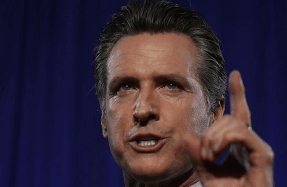Assessing the Trump Infrastructure Plan

President Trump’s proposed $1.5 trillion infrastructure program takes a page out of his playbook as a real estate developer, leveraging other people’s money to build things. Trump is proposing a $200 billion federal contribution, about 13 percent of his hoped-for investment total; the idea is that the initial federal investment will encourage states, localities, and private investors to contribute the remaining 87 percent.
The program’s centerpiece is a $100 billion federal matching fund that will provide up to 20 percent of the cost of a project—a ratio that reverses historical practice. Often, Washington puts up as much as 80 percent of the cost of highway projects, with localities contributing the rest. Trump’s plan makes “new revenue”—for example, tolls on currently free interstates—the biggest determinant of which projects will qualify for the federal match. A big question mark is whether a 20 percent federal contribution will be enough of a carrot to induce states to invest. And while the plan is billed as empowering states, the federal government will determine which projects get funded through the match program—so Washington will maintain control, perhaps even more so than today.
The matching fund offers several advantages, though. One is that it can be flexibly applied to a wide range of infrastructure, particularly water and sewer projects, areas where older, post-industrial cities are facing billions of dollars in repairs. A federal matching plan that creates incentives for states to address their localities’ aging sewerage and supply could finally spark action. Another positive: heavy reliance on non-federal money will reduce political incentives for boondoggles. It’s easy to build a road to nowhere when the federal government is paying for 80 percent of it. But when governors and mayors have to raise their own funds, they will need to make a stronger case to taxpayers that the proceeds will be spent well. Bad projects could still be built, of course, but local funding should promote greater public scrutiny. If states and localities end up refusing federal dollars, that could be a sign that local fiscal discipline worked.
Trump’s plan also includes an additional $20 billion for existing federal infrastructure loan programs, with expanded project eligibility. Another $20 billion will be set aside for “bold, innovative, and truly transformative projects,” yet to be determined. As under older arrangements, Washington will pay for up to 80 percent of these projects.
Trump wants to reduce significantly the federal approval timeline—from eight or more years for major projects down to two years, using a “one agency, one decision” approach. The lengthy permitting process is one reason that the Obama administration’s 2009 stimulus failed to deliver much long-term value—there simply weren’t enough high-quality, shovel-ready projects to spend it on. The Obama administration itself tried to chip away at a process that makes it difficult to implement infrastructure projects, but it made limited progress. History suggests that President Trump will also find it tough to streamline the regulatory red tape.
Another major part of Trump’s plan looks problematic: $50 billion in grants for rural infrastructure, a large portion of which would come in the form of block grants to the states. Rural areas have clear infrastructure needs, such as better broadband and upgrades to small-town sewer systems, but rural America is also prime territory for boondoggle highway projects. There’s no evidence, for example, that building major highways through rural areas spurs economic growth. Yet roads seem to be the go-to item for too many rural-state governors.
The politics of getting an infrastructure plan through Congress will be grueling. Democrats will be keen to deny Trump any political victories. Environmentalists are already lining up to oppose the regulatory rollback. One encouraging sign is that Senate Minority Leader Chuck Schumer’s need for federal funding for New York’s Gateway Project—to build new rail tunnels under the Hudson River—may get him to force Democrats to the negotiating table. Where the $200 billion in federal funding will come from also remains to be seen.
But while the political prospects for a deal may be uncertain, the administration has at least put a proposal on the table that lives up to one of the president’s promises: it is a departure from business as usual in Washington.






